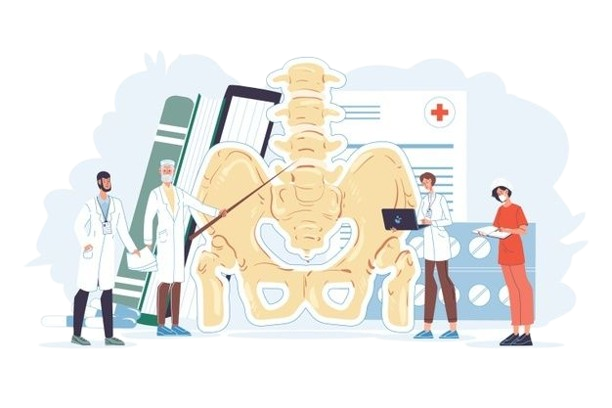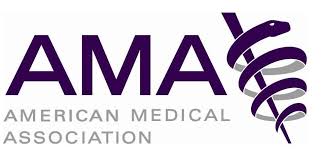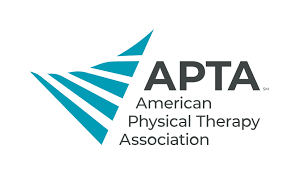CPT Code for Physical Therapy: Complete billing Guide 2025
What is a CPT code for physical therapy?
A CPT code for physical therapy is a standardized 5-digit code used to document and bill specific treatments like therapeutic exercises, manual therapy, and gait training. These codes ensure accurate insurance claims and help track patient progress across sessions.

BLOG OUTLINE
- What are CPT Codes ?
- Why CPT Code for Physical Therapy matters ?
- CPT Codes Categories
- Common CPT Codes For Physical Therapy
- How to Code Physical Therapy Treatments Correctly
- Accurate CPT Code for Physical Therapy : Tips
- Common Mistakes to Avoid When Using CPT Codes
- The Role of Insurance in CPT Code Reimbursement
- Stay Updated on CPT Code For Physical Therapy
- Mastering CPT Code for Physical Therapy
- FAQs on CPT Code for Physical Therapy
Welcome to the world of physical therapy—where recovery, movement, and precision go hand in hand! Whether you’re a practitioner aiming to ensure accurate documentation or a patient curious about what your insurance covers, understanding CPT codes can be a game changer. CPT codes act as a universal language in healthcare, helping professionals streamline care and billing practices.
In this guide, we’ll break down the essential CPT code for physical therapy, explain how they work, and show you how mastering them can benefit both clinical outcomes and financial efficiency. Let’s get started on unraveling these codes to make your physical therapy journey smoother and more informed. You might also be interested in reading POS codes in mental health billing
What are cpt codes?
Current Procedural Terminology (CPT) codes, maintained by the American Medical Association (AMA), are five-digit codes used to describe medical, surgical, and diagnostic procedures. They are essential tools that enable physical therapists and other healthcare providers to clearly communicate the services rendered. Each CPT code for physical therapy describes a specific procedure, allowing therapists to accurately bill insurance companies and maintain consistent records.
CPT codes are used not only by physical therapists but also by other healthcare professionals, insurance companies, and regulatory bodies. They allow for a consistent understanding of the types of services provided, thereby facilitating communication among various stakeholders. Each CPT code corresponds to a specific service or procedure, making it easier for insurance companies to process claims and for healthcare providers to track patient care.
Understanding CPT code for physical therapy can be daunting due to multiple codes and the complexity of their descriptions. However, a solid grasp of these codes is critical for anyone involved in physical therapy. By familiarizing yourself with the structure and use of CPT codes, you can enhance your ability to deliver precise and effective care, ensure proper billing, and improve overall patient outcomes.
For Insurance Credentialing, Medical Billing Services and other services
Why CPT Code for Physical Therapy matters
CPT code for physical therapy does not contribute to billing only, they are also essential for tracking patient progress, planning treatments, and coordinating care among providers. For physical therapists, these codes support:
Accurate treatment documentation
Insurance claim submissions
Patient care coordination
Compliance with legal and regulatory standards
From a financial perspective, accurate application of CPT code for physical therapy treatment is essential for securing reimbursement from insurance companies. Incorrect or use of outdated code for therapy can lead to denied claims, delayed payments, and increased administrative burdens for physical therapy provider. By understanding and using the appropriate CPT code for physical therapy can streamline the billing process for therapists, reducing the likelihood of errors, and ensure proper reimbursement for their services.
Incorrect or vague coding can lead to denied claims, payment delays, or even audits. Using the right physical therapy CPT codes ensure accurate reimbursement you deserve and that your patients get the care they need without unnecessary administrative headaches.

CPT Codes Categories
CPT codes are structured in a systematic way, with each code consisting of five digits. These codes are divided into three main categories, each serving a different purpose and encompassing different types of services. Understanding the structure and categorization of CPT codes is essential for accurate coding and effective communication in physical therapy. CPT codes are categorized into three types:
Category I: These are the most frequently used and cover medical procedures, including physical therapy services.
Category II: Optional codes used for performance measurement and tracking quality metrics.
Category III: Temporary codes for emerging technologies or experimental procedures.
Common CPT Code for Physical Therapy
In the realm of physical therapy, certain CPT codes are used more frequently due to the nature of the treatments and therapy services provided. Familiarizing yourself with these common codes can help streamline the meding coding process for physical therapy and improve the accuracy of overall medical billing process.
- One of the most frequently used CPT code for physical therapy is 97110, which refers to therapeutic exercises. This code is used to document exercises aimed at improving strength, endurance, range of motion, and flexibility.
Another common code applied for physical therapy treatment is CPT 97112, which covers neuromuscular re-education. This code is used for treatments that focus on improving balance, coordination, posture, and proprioception.
- Other commonly used CPT codes in physical therapy includes CPT 97116 for gait training, CPT 97140 for manual therapy techniques, and CPT 97530 for therapeutic activities.
Each of these codes corresponds to a specific type of treatment or intervention, allowing therapists to accurately document the services provided and ensure proper reimbursement. Knowing how and when to use these codes is crucial for proper documentation and timely reimbursement for physical therapy practice.
How to Code Physical Therapy Treatments Correctly
The process of coding for physical therapy treatments involves several steps, each of which is crucial for ensuring accurate documentation and proper reimbursement. By following a systematic approach, physical therapists can streamline the coding process and minimize the risk of errors. Coding physical therapy services involves more than just picking a code from a list. The process for coding accuracy involves:
Evaluate the Patient: Begin with a thorough assessment of the patient’s condition and treatment goals.
Develop a Plan: Identify which services are medically necessary based on the evaluation.
Select the Right Code: Match the service provided with the most appropriate CPT code.
Document Thoroughly: Include details such as treatment duration, techniques used, and patient progress.
By aligning your treatment plan with the correct CPT code for physical therapy, you improve patient care while protecting your revenue cycle.
accurate cpt code for physical therapy: tips
Accurate CPT coding is essential for ensuring proper documentation, effective communication, and timely reimbursement. By following a few key tips, physical therapists can improve the accuracy of their coding and streamline the billing process.
- One important tip for accurate CPT coding is to stay current with the latest coding guidelines and updates. The AMA regularly updates the CPT code set to reflect changes in medical practice and emerging technologies. By staying informed about these updates, therapists can ensure that they are using the most current codes and accurately documenting the services provided.
- Another tip for accurate coding is to be thorough and detailed in your documentation. This includes providing a clear and concise description of the services provided, as well as any relevant patient information. Detailed documentation can help support the use of specific CPT codes and ensure clean claim processing. Additionally, it is important to use the most specific code available, as this can help avoid issues with insurance reimbursement.
- Don’t forget to apply modifiers when services deviate from the norm, such as during extended treatment sessions.
Common Mistakes to Avoid When Using CPT Codes
While accurate CPT coding is essential for effective physical therapy practice, it is also important to be aware of common mistakes that can lead to errors and complications. By avoiding these common pitfalls, therapists can improve the accuracy of their coding and ensure proper reimbursement.
- One common mistake is using outdated or incorrect CPT codes. As mentioned earlier, the AMA regularly updates the CPT code set to reflect changes in medical practice. Using outdated codes can lead to denied claims and delayed payments. To avoid this, therapists should stay current with the latest coding guidelines and updates.
- Another common mistake is failing to provide detailed documentation to support the use of specific CPT codes. Incomplete or vague documentation can lead to issues with insurance reimbursement and may result in denied claims. Therapists should ensure that they provide a clear and concise description of the services provided, as well as any relevant patient information.
Insurance plays a critical role in the reimbursement process for physical therapy services. Understanding how insurance companies use CPT codes to process claims and determine reimbursement can help therapists navigate the complexities of the billing process and ensure proper payment for their services. When a physical therapist submits a claim to an insurance company, the CPT codes used in the claim provide a detailed description of the services provided. The insurance company uses these codes to determine the medical necessity of the services and the appropriate reimbursement amount. Accurate and specific coding is essential for ensuring that claims are processed smoothly and that therapists receive timely payment for their services. Insurance companies also use CPT codes to track patient care and identify trends in medical practice. By analyzing the data from submitted claims, insurance companies can identify patterns and make informed decisions about coverage policies and reimbursement rates. Therapists who understand the role of insurance in the reimbursement process can better navigate the complexities of billing and ensure that they are compensated fairly for their services.


Stay Updated on CPT Code for physical therapy
Staying updated on CPT codes is essential for accurate coding and effective physical therapy practice. Fortunately, there are several resources available to help therapists stay informed about the latest coding guidelines and updates.
One valuable resource is the American Medical Association (AMA) website, which provides comprehensive information about CPT codes, including updates and changes to the code set. The AMA also offers educational materials, such as webinars and online courses, to help therapists stay current with the latest coding guidelines.
Another helpful resource is professional organizations and associations, such as the American Physical Therapy Association (APTA). These organizations often provide coding resources, including guides, articles, and continuing education opportunities, to help therapists stay informed about the latest developments in CPT coding. Additionally, subscribing to industry newsletters and journals can provide valuable insights and updates on coding practices.
Mastering CPT Code for Physical Therapy
Understanding how to correctly use a CPT code for physical therapy is key to running an efficient, compliant, and patient-focused practice. These codes enable clear communication, ensure proper insurance reimbursement, and reflect the value of services provided.
As healthcare continues to evolve, therapists who stay informed and agile with their coding practices will find themselves better positioned to succeed. With the right knowledge, tools, and attention to detail, you can reduce claim denials, maximize revenue, and focus on what really matters—helping patients heal.
At MedStates, we specialize in accurate CPT coding, claims management, and insurance reimbursement for physical therapy practices.
📞 Contact us today or request a free billing audit!


